Video Segmentation: Techniques for Precise Tracking
Table of Contents
- TL;DR
- What Is Video Segmentation in Computer Vision?
- Types of Video Segmentation
- How Video Segmentation Works
- Where Is Video Segmentation Used?
- Common Challenges in Video Object Segmentation
- Tools and Resources for Video Segmentation
- Getting Started with Your Video Segmentation Workflow
- About Label Your Data
- FAQ

TL;DR
What Is Video Segmentation in Computer Vision?
Video segmentation is the process of dividing video content into distinct regions based on characteristics like motion, color, and texture. It enables the identification of objects or events in videos, helping extract structured data for further analysis.
For example, image recognition helps identify objects or scenes in individual frames, while video segmentation expands on this by tracking and isolating these elements across multiple frames.
This technique plays a vital role in computer vision by supporting tasks like object tracking and scene understanding. For example, it’s used in autonomous vehicles to detect obstacles and in video editing to isolate specific elements, such as people or objects.
Types of Video Segmentation
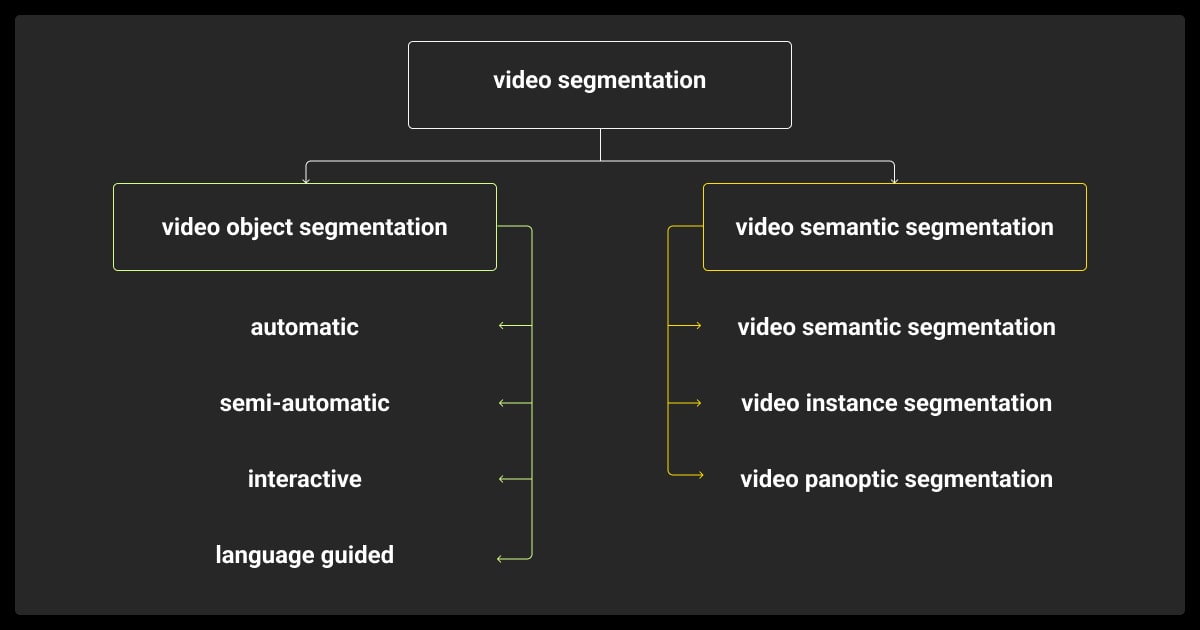
Video segmentation is used to break videos into parts, and there are two main types: video object segmentation and video semantic segmentation.
Video Object Segmentation (VOS)
This type focuses on finding and tracking specific objects in a video. It separates objects from the background and follows their movement across frames. Common uses include:
Security: Watching and identifying objects or people in real-time.
Self-Driving Cars: Spotting pedestrians or obstacles on the road.
Sports: Following players or equipment during a game.
Video Semantic Segmentation (VSS)
This type labels every pixel in a video frame to understand the whole scene. It doesn’t just track objects but explains the context too. Examples include:
Augmented Reality: Adding digital items to real-life environments.
Healthcare: Spotting abnormalities in medical scans.
Video Summaries: Picking out the most important parts of a long video.
Up next, we’ll look at how these methods work and the tools that make them possible.
How Video Segmentation Works
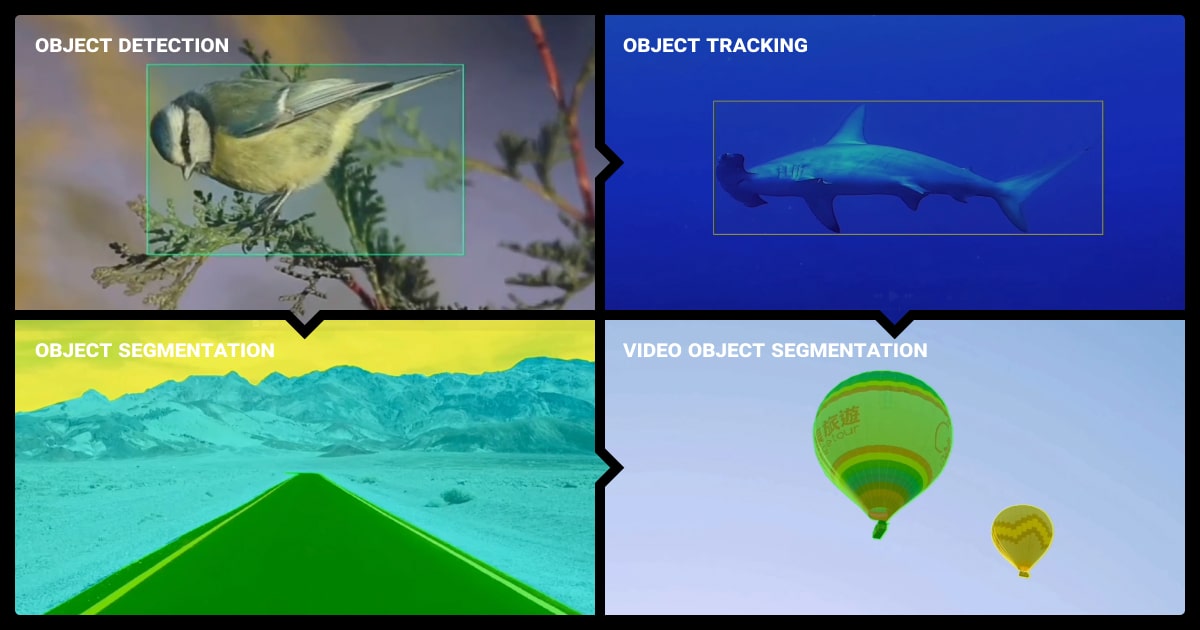
Video segmentation breaks down a video frame by frame. Each frame is analyzed to separate objects, background, and other important elements. The process combines visual cues and machine learning models to create detailed segmentations.
Here’s a closer look:
Key Steps in Video Segmentation
Object detection serves as a precursor to video segmentation by identifying and localizing objects within a frame, which are then segmented for further analysis.
Frame Analysis
Each frame is processed to detect visual features like edges, textures, and colors that help differentiate objects.
Object Detection
AI models identify objects of interest, such as vehicles or people, and separate them from the background.
Tracking Across Frames
Algorithms like Kalman Filter or Optical Flow track the position and motion of objects across frames to ensure consistency.
Our breakthrough approach revolves around what we call 'Temporal Contextual Fusion'—a sophisticated multi-frame analysis technique that goes far beyond traditional frame-by-frame segmentation methods. By using a hybrid convolutional-transformer model, we achieved segmentation accuracy rates exceeding 94.3% across complex, fast-moving video scenarios.
Common Techniques
Optical Flow
Tracks pixel movement to determine object motion between frames, ideal for smooth motion tracking.
Deep Learning Models
Selecting the right machine learning algorithm, such as Convolutional Neural Networks or transformers, is crucial for accurate video segmentation.
Annotation Tools
Platforms like SAM2 and V7 streamline labeling large datasets, often using semi-automated or AI-assisted methods.
These steps and tools make video segmentation effective for real-time applications like self-driving cars or detailed video analysis for medical imaging.
Where Is Video Segmentation Used?
Video segmentation is widely used across industries, solving complex problems and improving efficiency in various fields. Here are some of its key applications:
Autonomous Vehicles
Video segmentation allows self-driving cars to detect obstacles, lanes, and pedestrians in real time. By analyzing live video streams, these vehicles can make safer decisions for navigation.
Healthcare
In medical image annotation, segmentation helps identify abnormalities like tumors or organ boundaries. It’s also used during surgeries for precise monitoring and treatment planning.
Surveillance
Security systems use video segmentation to track people or objects in real time. This helps detect suspicious activities or manage access control effectively.
Sports Analytics
Coaches and analysts track players and game actions using segmentation. This data improves strategy development, player performance, and the creation of automated highlight reels.
Video Editing and Content Creation
SAM2 video segmentation and similar tools help editors separate objects or backgrounds easily. This enables efficient background replacement, object isolation, or visual effects application.
When we switched to carefully curated training data, our accuracy jumped by 30%. I always suggest spending extra time cleaning and labeling your training videos, making sure they closely match the type of content you'll be processing in real-world applications.
Common Challenges in Video Object Segmentation
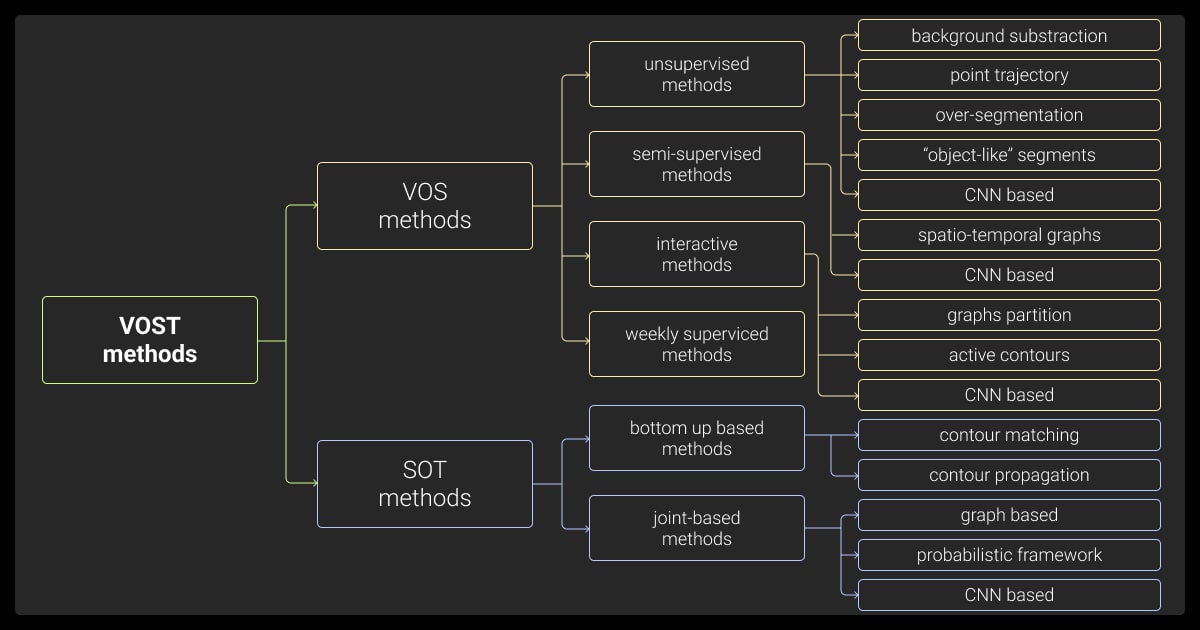
While video segmentation has revolutionized many industries, it comes with several challenges that can affect accuracy and efficiency.
Temporal Inconsistency
Videos are made up of continuous frames, but rapid changes between frames, like sudden object motion or lighting shifts, can disrupt segmentation accuracy. This often requires advanced algorithms like recurrent neural networks (RNNs) or optical flow for smoother transitions.
Occlusion
Objects in a video may become partially or fully hidden behind other objects. This makes it difficult to track or segment them accurately across frames. Techniques like depth sensing and multi-camera setups can help mitigate this issue.
Video Quality
Low-resolution videos, motion blur, and poor lighting reduce the effectiveness of segmentation models. Solutions include using pre-processing methods like frame enhancement or training models on diverse, high-quality datasets.
Computational Demands
Processing high-resolution videos or real-time streams requires significant computing power. Lightweight, optimized algorithms or cloud-based systems are often employed to handle the load.
Limited Training Data
Many segmentation models rely on data annotation, which can be time-consuming and expensive to create. Semi-supervised or synthetic data approaches are used to bridge this gap. You can also outsource data annotation services for consistent and accurate training data.
Feeding your segmentation algorithm with clean, well-labeled training data from your specific video niche makes the biggest impact on accuracy. When we developed our video processing tools, we saw accuracy jump from 75% to over 90% just by using domain-specific training data and running regular model retraining with user feedback.
Tools and Resources for Video Segmentation
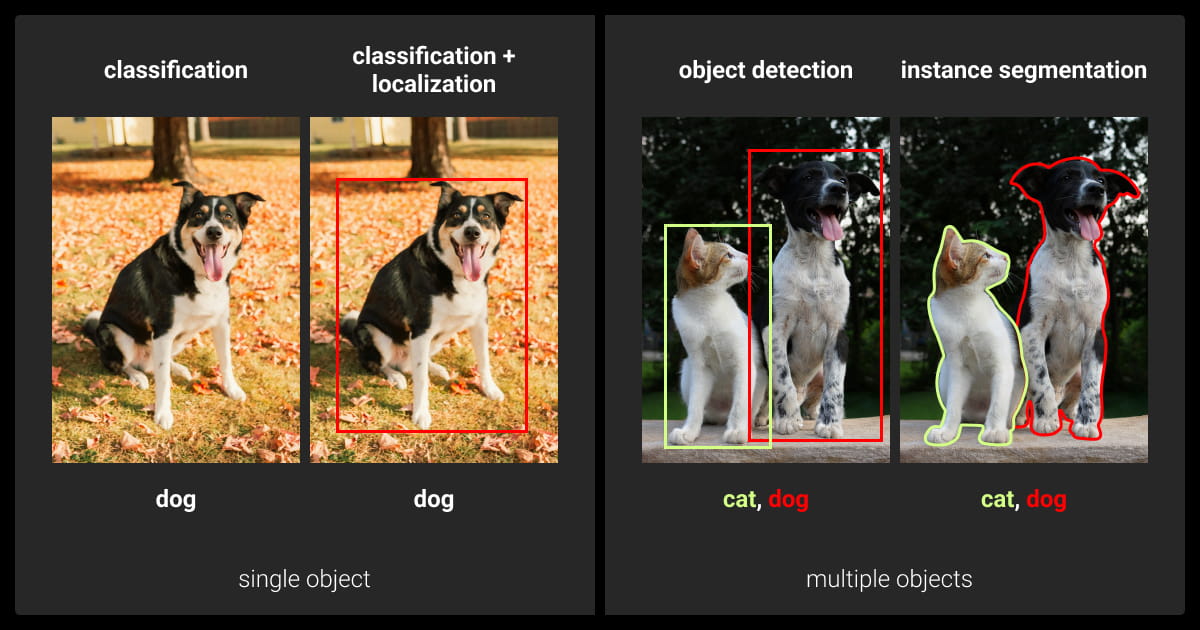
To successfully implement video segmentation, you need the right tools, frameworks, and datasets. Here are some of the most effective options available:
Popular Tools
SAM2: Real-time video segmentation with zero-shot versatility.
V7: Advanced annotation platform for large-scale, time-saving workflows.
OpenCV: Pre-process videos by stabilizing motion, reducing noise, and enhancing quality.
Frameworks
PyTorch: A leading framework for building and training custom video segmentation models.
TensorFlow: Flexible for deploying models at scale, ideal for production.
Datasets
YouTube-VOS: Large dataset for training and benchmarking video object segmentation.
DAVIS: High-quality dataset with dense annotations for segmentation tasks.
SA-V: Diverse dataset for SAM2, featuring real-world scenarios across industries.
Other Resources
Pre-trained Models: Tools like SAM2 offer models you can fine-tune for specific needs.
Documentation and Tutorials: Official guides from PyTorch, TensorFlow, and SAM video segmentation.
By leveraging these tools and resources, you can streamline your video segmentation projects. Budgeting for high-quality labeled datasets requires a clear understanding of data annotation pricing, as it directly influences the performance of your segmentation models.
Getting Started with Your Video Segmentation Workflow
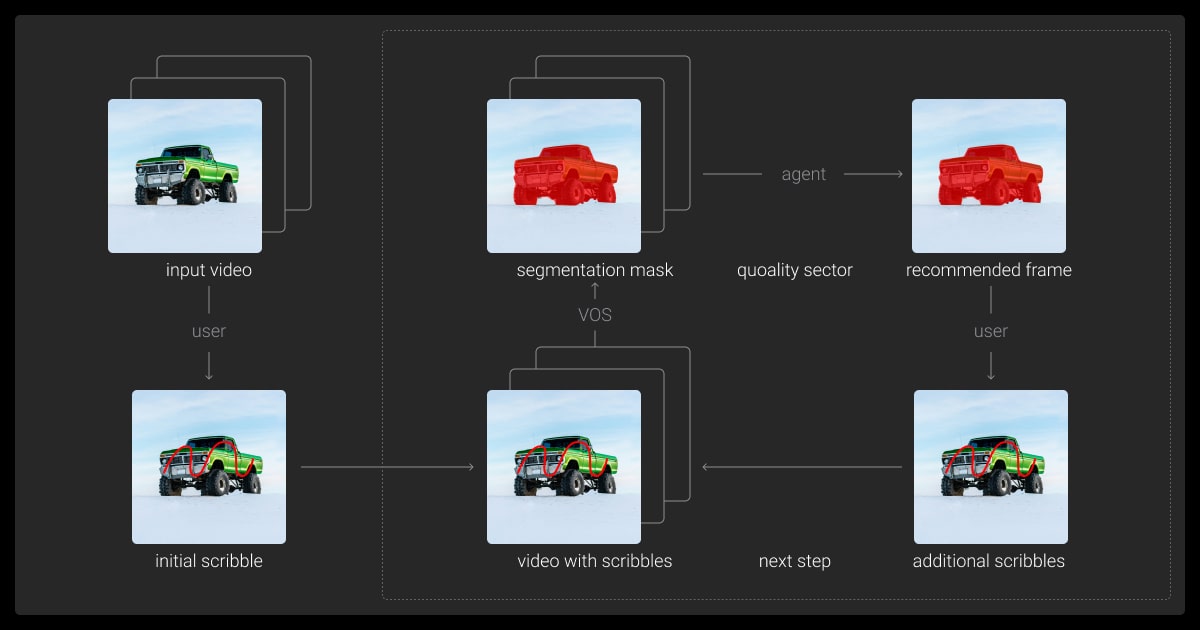
If you’re starting with video segmentation or improving your workflows, here are the essentials:
Pick the Right Tool
Use tools like SAM2 for real-time segmentation or V7 for advanced annotation workflows. Match your tool to your needs, whether speed, precision, or large-scale projects.
Prepare Your Data
Enhance Videos: Stabilize motion, reduce noise, and improve resolution using tools like OpenCV.
Streamline Labeling: Use semi-automated annotation features to save time.
Fine-Tune Models
Customize pre-trained models with your dataset to achieve better results, especially for niche tasks like medical imaging or unique object detection.
Optimize for Performance
Run models on cloud platforms for handling large datasets or real-time tasks.
Use lightweight models for edge devices to balance speed and resource use.
Use Quality Datasets
Leverage public datasets like YouTube-VOS or DAVIS, or create custom datasets to ensure relevance and diversity.
Test and Refine
Evaluate models with metrics like IoU and test against challenging scenarios, such as poor lighting or occlusion.
Keep these best practices in mind, but remember that high-quality annotation is essential. Partnering with the right data annotation company ensures consistent, accurate datasets for optimal video segmentation model performance.
About Label Your Data
If you choose to delegate data annotation, run a free data pilot with Label Your Data. Our outsourcing strategy has helped many companies scale their ML projects. Here’s why:
No Commitment
Check our performance based on a free trial
Flexible Pricing
Pay per labeled object or per annotation hour
Tool-Agnostic
Working with every annotation tool, even your custom tools
Data Compliance
Work with a data-certified vendor: PCI DSS Level 1, ISO:2700, GDPR, CCPA
FAQ
What is video segmentation?
Video segmentation is the process of dividing a video into meaningful parts based on features like motion, color, or texture. It’s widely used in applications like object tracking, scene understanding, and video editing.
What are segments in video production?
In video production, segments refer to specific parts or sections of a video that are separated for editing, storytelling, or analysis. These could be individual shots, scenes, or key moments in the video.
What is video instance segmentation?
Video instance segmentation identifies and segments individual objects in a video while distinguishing between multiple instances of the same object. For example, it can track two people in a scene and assign each a unique label.
How to create segments in a video?
Use tools (e.g., SAM2) to automatically identify and separate objects or scenes.
Manually define segments by annotating frames or using timeline-based video editing software.
For advanced projects, leverage machine learning models to automate and refine the segmentation process.
Written by
Karyna is the CEO of Label Your Data, a company specializing in data labeling solutions for machine learning projects. With a strong background in machine learning, she frequently collaborates with editors to share her expertise through articles, whitepapers, and presentations.




